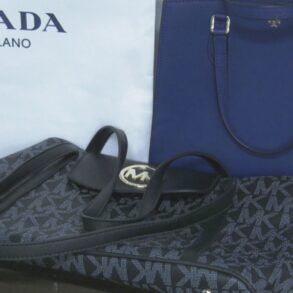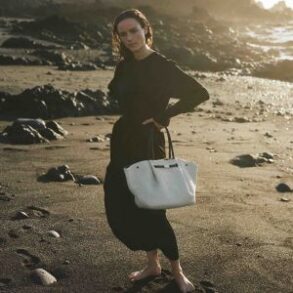LONDON — Bernstein’s Luca Solca gave Compagnie Financière Richemont an extra round of applause on Friday, upgrading the luxury giant’s shares to “outperform” and raising its price target to 153 Swiss francs.
Richemont shares closed at 109.80 Swiss francs on Friday, the end of a tumultuous week that saw Farfetch mysteriously cancel a third-quarter financial update amid reports it could return to private ownership.
As reported, Richemont, which is set to sell a majority stake in Yoox Net-a-porter to Farfetch and Alabbar, said it has “no financial obligations toward Farfetch,” and it does not envisage lending to, or investing in, the company.
Richemont added it was “carefully monitoring the situation” and “reviewing its options” with regard to the deal, which also foresaw Richemont’s maisons working closely with Farfetch on tech, data capture and e-commerce.
The deal received regulatory approval from the U.K. and the European Commission and was set to close later this year, or in early 2024.
Until recently, markets were widely in favor of Richemont’s decision to pass YNAP over to Farfetch. For years, analysts had been telling Richemont to get rid of the unprofitable YNAP and focus on what it does best: hard luxury.
The wheels were already in motion: In the first six months of fiscal 2023, Richemont reported a loss of 766 million euros following the noncash writedown of assets linked to the proposed sale of a majority stake in YNAP.
For the second time in less than a week, Solca praised Richemont for its decision to step away from Farfetch.
“We credit the Richemont management team that they have taken good safeguards against Farfetch having trouble, and that — in a proverbially once bitten, twice shy — they will not be drawn in as a white knight, eleventh-hour savior (like they had instead done with YNAP),” wrote Solca.
He added: “Given the jewelry category leadership of Cartier and Van Cleef & Arpels, and the greater relative appeal of jewelry against handbags on the back of more subdued price increases in the past few years, we upgrade Richemont to outperform,” Solca added, referring to Richemont as a “jewelry champion” in the report.
Solca noted that the Richemont jewelry brands, Cartier, Van Cleef & Arpels and Buccellati “are at the top of their category, and [sit within] a small group of global megabrands alongside soft luxury behemoths.”
He also stressed that the “overhanging Farfetch-YNAP issue is of less concern for now, as safeguards are in place and further engagement with Farfetch is averted.”

Inside the Buccellati atelier in Milan.
Courtesy of Buccellati
Earlier in the week, Bernstein had written that Richemont’s statement was “excellent news for investors given that Farfetch’s weakness was a key risk for [the luxury giant’s] stock. Richemont is closer to reaching luxury safe haven category and joining LVMH [Moët Hennessy Louis Vuitton] and Hermès as our top picks for next year.”
On Friday, Solca also downgraded Prada to “market perform,” with a price target of 49 Hong Kong dollars. Prada’s shares closed down at 43 Hong Kong dollars.
“Self-help stories are difficult when demand is strong. They become even more difficult when consumers put the foot on the brake and concentrate their spend on must-have brands,” wrote Solca.
“Prada has recently produced organic growth in line with high-quality players like LVMH [Moët Hennessy Louis Vuitton] and Richemont. But this was largely the result of a strong Miu Miu and fashion offer, while the core Prada brand was significantly slower, and leather goods were flat.
“We are concerned about price increases at Prada as consumers continue to sober up from post COVID-19 euphoria. Prada is also in no position to reduce its brand support cost as much as megabrands as it suffers a material scale disadvantage and wants to try and stay in the ‘premier league,’ which entails more than 8 percent communication costs as a percentage of sales,” Solca added.
Solca’s report also talked about the difficulties that could lie ahead for luxury groups in the first half of 2024 given the macroeconomic challenges.
He pointed to increasing geopolitical tensions and the impact that interest rate hikes and inflation might have on high-end consumer sentiment.
Solca also mentioned that 2024 is a presidential election year in the U.S., “which normally brings a rather subdued macro-economic environment. Against those risks, some investors wonder if the path to luxury spend normalization may have to go through a couple of years of decline as consumers atone for the post COVID-19 pandemic euphoria.”
This post was originally published on this site be sure to check out more of their content.






